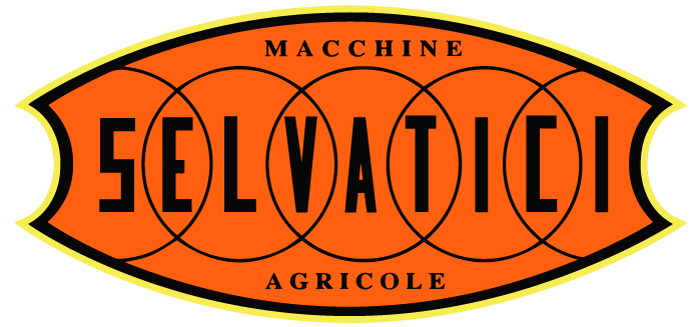SPADING MACHINES
General characteristics of spading machines:
- facilitating soil drainage and reducing the risk of slope runoff since that hard sole is not created under the tilled soil, a negative feature of other rotary or trailed implements.
- tilling is done evenly across the width of the machine by evenly turning the soil so that fertilizer, manure or stubble can be buried.
 - the tilled soil has a flat surface, and the clods are of regular size so much so that sowing can often already be done directly.
- the tools enter the soil one at a time, which allows for minimal tractor energy use and their durability is longer because they only work as they descend.
- the spader is not towed by the tractor; on the contrary, it aids its advance so much so that this is the only implement that can work in wet soils because the tractor does not risk getting bogged down (since the demand for tractor wheel traction is minimal) and, in sloping terrain, in addition to helping the tractor advance, it keeps it in a stable position. It also reduces fuel consumption compared to traditional tillage such as plowing, ripping, and milling.
- does not form the compact, impermeable soil layer underneath that prevents both greater root development and regular water runoff, so it does not trigger, especially on hillsides, dangerous slippage of tilled soil.
- always ensures that clods are turned over and thus allows both faster aeration of the soil and the elimination, right from the roots, of harmful weeds.
- the tilled soil has a flat surface, and the clods are of regular size so much so that sowing can often already be done directly.
- the tools enter the soil one at a time, which allows for minimal tractor energy use and their durability is longer because they only work as they descend.
- the spader is not towed by the tractor; on the contrary, it aids its advance so much so that this is the only implement that can work in wet soils because the tractor does not risk getting bogged down (since the demand for tractor wheel traction is minimal) and, in sloping terrain, in addition to helping the tractor advance, it keeps it in a stable position. It also reduces fuel consumption compared to traditional tillage such as plowing, ripping, and milling.
- does not form the compact, impermeable soil layer underneath that prevents both greater root development and regular water runoff, so it does not trigger, especially on hillsides, dangerous slippage of tilled soil.
- always ensures that clods are turned over and thus allows both faster aeration of the soil and the elimination, right from the roots, of harmful weeds. - requiring no tractive or braking effort from the tractor, it can be used even on steep slopes without any problem and in complete safety.
- requiring no tractive or braking effort from the tractor, it can be used even on steep slopes without any problem and in complete safety.
 - the tilled soil has a flat surface, and the clods are of regular size so much so that sowing can often already be done directly.
- the tools enter the soil one at a time, which allows for minimal tractor energy use and their durability is longer because they only work as they descend.
- the spader is not towed by the tractor; on the contrary, it aids its advance so much so that this is the only implement that can work in wet soils because the tractor does not risk getting bogged down (since the demand for tractor wheel traction is minimal) and, in sloping terrain, in addition to helping the tractor advance, it keeps it in a stable position. It also reduces fuel consumption compared to traditional tillage such as plowing, ripping, and milling.
- does not form the compact, impermeable soil layer underneath that prevents both greater root development and regular water runoff, so it does not trigger, especially on hillsides, dangerous slippage of tilled soil.
- always ensures that clods are turned over and thus allows both faster aeration of the soil and the elimination, right from the roots, of harmful weeds.
- the tilled soil has a flat surface, and the clods are of regular size so much so that sowing can often already be done directly.
- the tools enter the soil one at a time, which allows for minimal tractor energy use and their durability is longer because they only work as they descend.
- the spader is not towed by the tractor; on the contrary, it aids its advance so much so that this is the only implement that can work in wet soils because the tractor does not risk getting bogged down (since the demand for tractor wheel traction is minimal) and, in sloping terrain, in addition to helping the tractor advance, it keeps it in a stable position. It also reduces fuel consumption compared to traditional tillage such as plowing, ripping, and milling.
- does not form the compact, impermeable soil layer underneath that prevents both greater root development and regular water runoff, so it does not trigger, especially on hillsides, dangerous slippage of tilled soil.
- always ensures that clods are turned over and thus allows both faster aeration of the soil and the elimination, right from the roots, of harmful weeds. - requiring no tractive or braking effort from the tractor, it can be used even on steep slopes without any problem and in complete safety.
- requiring no tractive or braking effort from the tractor, it can be used even on steep slopes without any problem and in complete safety.












